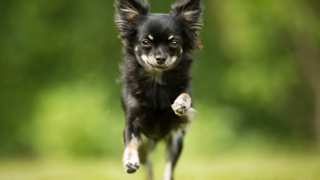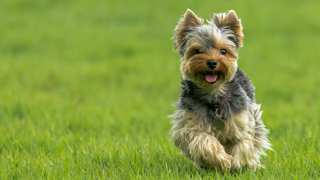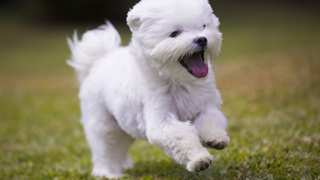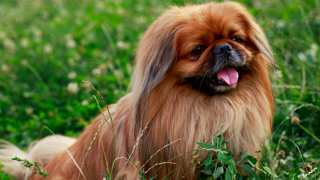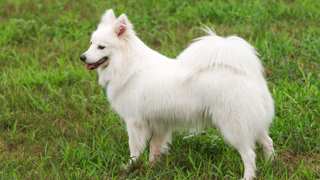The Pomeranian diet will need to include animal proteins and healthy carbs, vitamins and minerals, and omega fatty acids--nutrients every dog needs to maintain its health in the long term. This means the best Pomeranian dog food is premium dry kibble, as it contains balanced portions of the above-listed ingredients. If fed premium dry foods like Royal Canin, Pomeranian puppy and adult dogs will be much healthier and longer-lived.
And just how much to feed a Pomeranian? In short: not much! Adult Pom food portions, depending on the dog's size, age, and activity level are only about one cup per day, divided into two meals. Portions of food for Pomeranian puppy dogs are even smaller: again depending on age, about ¾ cup per day, divided into three meals (not two) until five months old.
For more info on Pom nutrition and feeding, see this Pomeranian feeding chart:
Dog AgeDog WeightFood TypeAmountFrequency6-7 Weeks>1 lbDry (Puppy formula)3-5 pieces3x/day3 Months1.5 lbsDry6-8 pieces3x/day5 Months3 lbsDry0.25 cups3x/day7 Months4 lbsDry* (Puppy/Adult)0.4 cups2x/day9 Months+5 lbsDry (Adult formula)0.5 cups2x/day*--Around this time, transition to adult food by mixing in adult formula with the puppy formula, in slowly increasing amounts with each meal, for one week.
Try if possible to stick to the above-listed portions. If constantly overfed (and under-exercised), these little dogs can easily become overweight--and a fat Pomeranian will have numerous health problems and a potentially shortened lifespan. You can help control your Pom's weight by having consistent feeding and exercise schedules, by not feeding the dog table scraps (and easy on the Pomeranian treats!), and by not leaving food in your Pom's bowl all the time.
If you're worried your Pomeranian is overweight, try this simple test: run a hand along the dog's side, and if you can't easily feel ribs, it's diet time--which means less food and more exercise!

